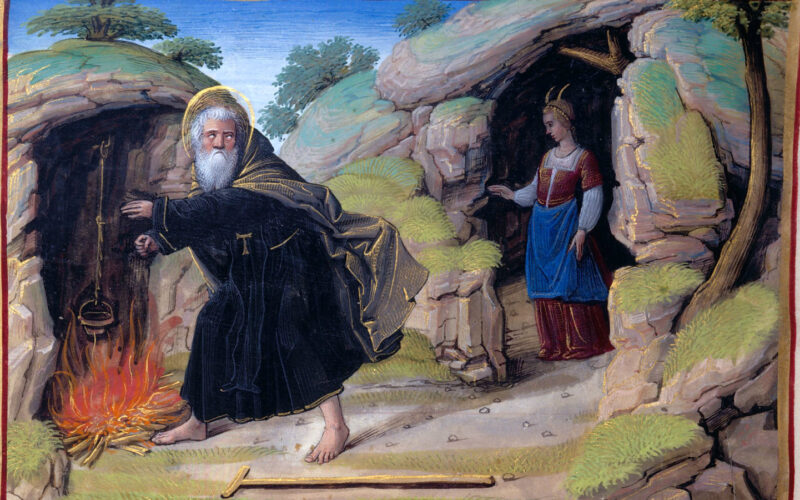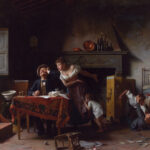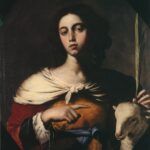Within these pages, as if carried by a gust of wind sweeping through an ancient portico, we delve into a narrative intertwining art, history, and religious symbolism. We follow the path marked by illustrious masters such as Alessandro Bonvicino, known as Moretto, and Pisanello. Our story begins with a figure both venerated and enigmatic, Saint Anthony the Abbot, the father of Christian monasticism, whose artistic depictions fade into the mists of history.
Like a character in a Renaissance painting, Saint Anthony emerges distinctly in collective memory. The 17th of January, his commemoration day, invites us to ponder the myriad depictions this saint has taken on over the centuries. Through the eyes of artists like Moretto and Pisanello, Saint Anthony is not just a religious figure but becomes a symbol, a voice for universal themes.
Moretto, with his painting housed in the Sanctuary of Madonna della Neve in Auro, portrays Saint Anthony almost like a wrathful god, ready to hurl fire at sinners. This powerful image reminds us that art is not just representation, but also interpretation and narrative. His work from 1530-1534, with its vivid colors and dramatic composition, captures the essence of the saint as protector and healer.
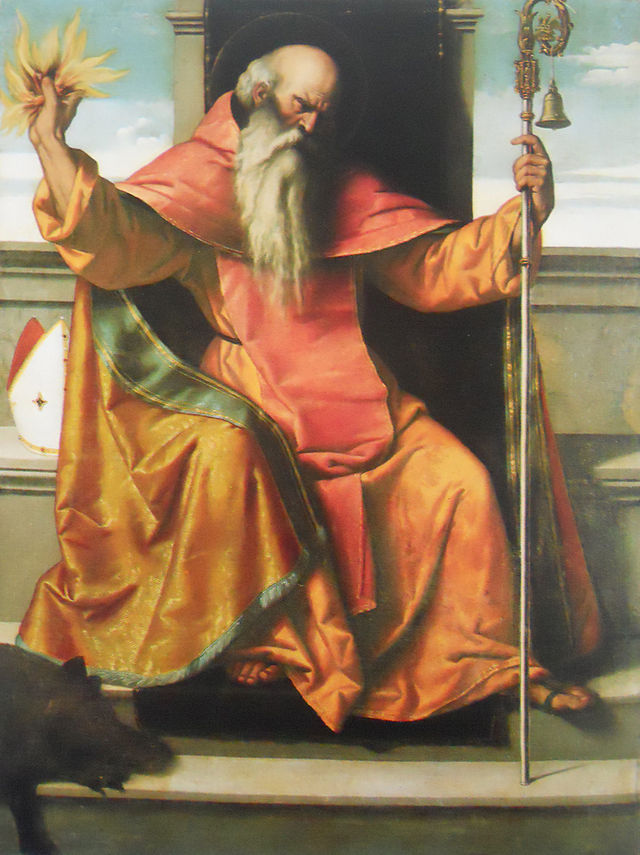
Pisanello, on the other hand, presents a more earthly Saint Anthony, protector of animals and the poor. His 1445 work at the National Gallery in London, alongside that of Saint George, speaks of duality: the countryside versus the city, the poor against the noble. Pisanello, with his mastery of detail and delicate colors, offers a slice of medieval life, where the sacred and profane intertwine.
And we mustn’t forget the miniatures in Henry VIII’s Book of Hours, masterpieces by Jean Poyer, showing refined, detailed art worthy of a king. These works, rich in symbolism and beauty, are silent witnesses to an era where art served faith and power.
These artworks, scattered like stars in a night sky, speak of a time when art was a means to express the complexity of human existence. Moretto, Pisanello, Jean Poyer, each in their own way, captured the essence of Saint Anthony the Abbot, making him immortal in their canvases and miniatures. In this immortal narration, art becomes a bridge connecting the past to the present, inviting us to reflect on our own existence.
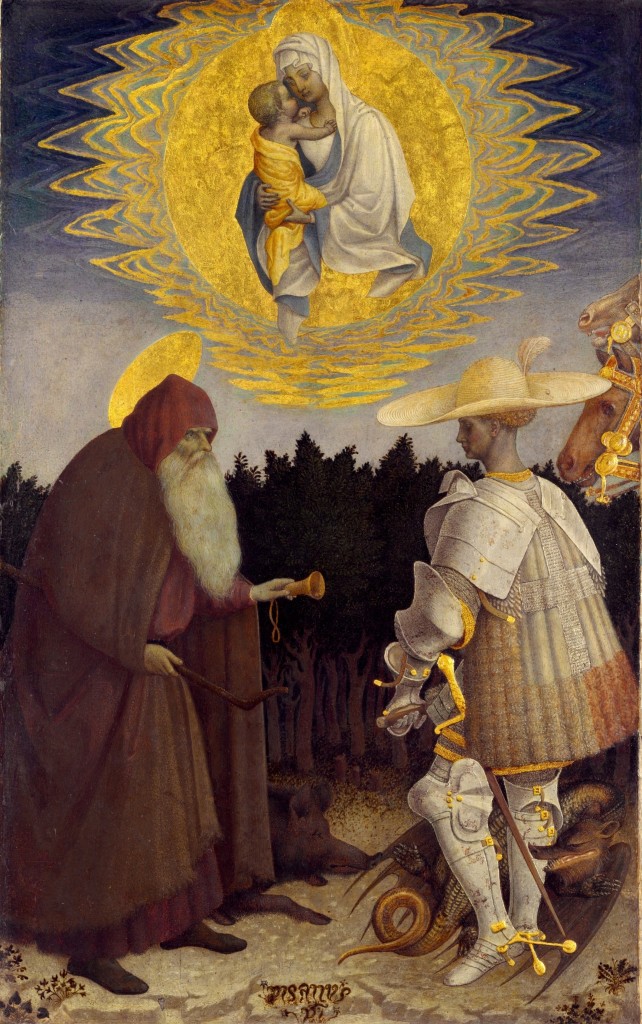
The figure of Saint Anthony the Abbot, as explored through the works of masters like Moretto and Pisanello, is enriched with symbolic details that reveal his intimate essence. These attributes, like brushstrokes on a canvas, not only outline the saint’s iconography but also the cultural and religious fabric he is immersed in.
Foremost among these is the pig, often depicted at Saint Anthony’s feet. This animal, appearing either as a piglet or, more rarely, a tamed boar, is a recurring symbol in the saint’s representations. The presence of the pig is not merely a decorative detail but harks back to the legend that Saint Anthony’s disciples, thanks to a privilege granted in 1095, could raise pigs for their lard. This lard, mixed with medicinal herbs, was used to treat what was known as “Saint Anthony’s fire,” today identified as herpes zoster.
Another distinctive element is the bell, often associated with the saint. This humble yet significant object symbolizes the call to prayer and spiritual reflection, a gentle sound spreading through the silence of the desert, Saint Anthony’s place of penance and meditation.
Finally, the staff with a T-shaped handle, resembling a crutch, is another classic attribute. This shape, reminiscent of the tau letter, is laden with symbolic meanings, linked to the cross and suffering. In some depictions, the staff is replaced by the tau letter itself or by a pastoral staff, further symbolizing the saint’s guiding and protective role.
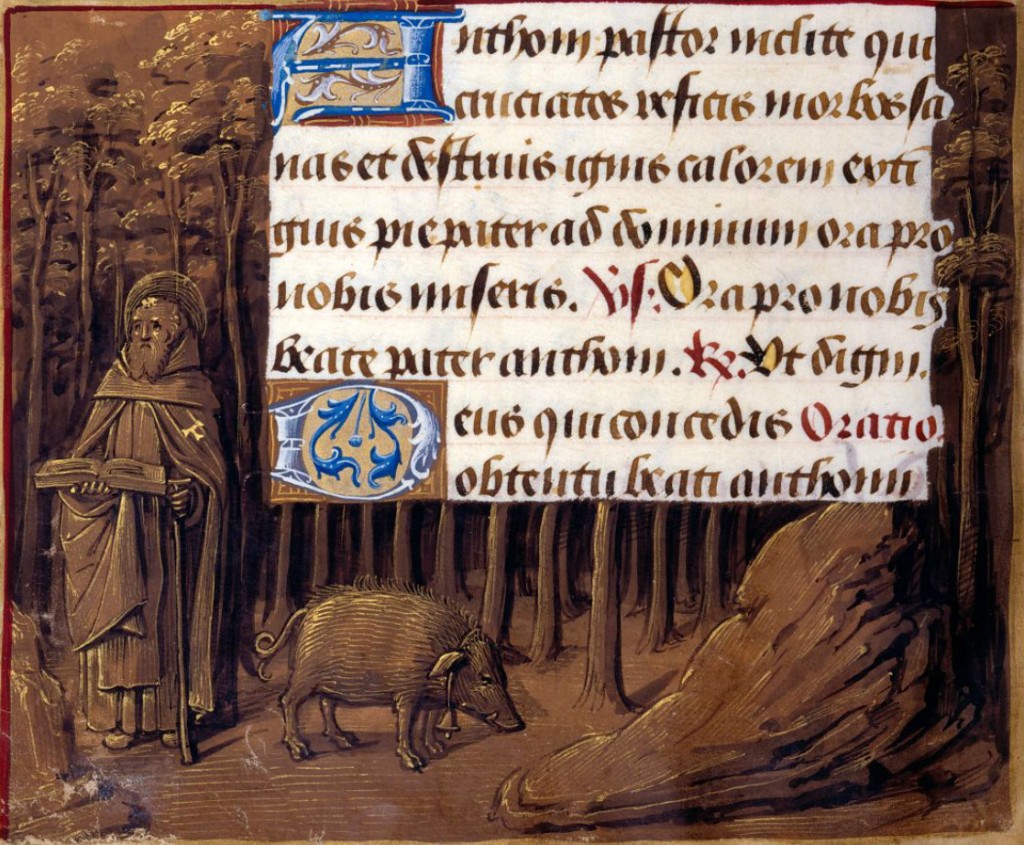
These attributes, skillfully incorporated into artworks, not only allow us to recognize Saint Anthony the Abbot in various representations but also speak of a world where symbols and images were a universal language, capable of conveying deep and complex messages. Each time we encounter a depiction of Saint Anthony, we are invited to read beyond the surface, to uncover the stories and meanings hidden behind these symbols, in a fascinating journey through history and spirituality.

